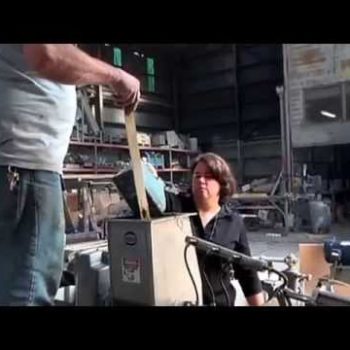Pineapple Mill Juice is the name used in pineapple processing to designate juice that is produced from pineapple skin. This juice is used to top off cans of pineapple slices, wheels, and chunks.
In contrast pineapple beverage juice, at a cannery, is made mostly from scrap meat from the trimming line, core, and eradicated (rasped) meat from the skins. The beverage juice produced typically has 12° Brix. Press cake remaining after extraction of beverage juice may be directed into the final stage press used in mill juice production.
The juice pressed from pineapple skins has a Brix of 8° to 10° Bx. Mill juice is produced by first shredding the ends (top and bottom) along with the lateral skin and cull fruit. A high-horsepower shredder, with a coarse screen, is common. Once shredded, the skin is first, second and even third pressed. That is, the cake from the first pressing goes directly, without any water addition, to second pressing; and possibly cake from second pressing goes to third pressing. The cake after third pressing is usually processed into animal feed.
Past tests of Vincent Twin Screw Press
Testing long ago in Hawaii with a Vincent Twin Screw press, Model TSP-12, provided the following data: Skin at the shredder (before pressing), 88% moisture; after first pressing, 80% moisture; after second pressing, 78% moisture; after third pressing (silage), 78% moisture. Brix of all press liquors, 9°.
At that plant, only screw presses of the interrupted flight design (Vincent, Jones, Rietz, and Schwarz) were used on the pineapple skin. The one Rietz press in service had the rotating cone feature; however, this appeared unnecessary as there was no channeling tendency and there was negligible press liquor coming through the cone screen. Cake discharge was uniform and non-channeling in all the presses.
Steam Injection to Improve Results
Dramatic improvement in juice production was realized by steam injection. Steam was injected both at the inlet hoppers of the screw presses and where stationary resistor teeth protruded into the main screen portion of the presses. Press liquor temperature was held at about 130° F.
The juice from the presses was first filtered in a static screen. Then it was heated to 190° F for three minutes and screened in a second set of static screens. Then it was cooled and filtered in a Vincent Fiber Filter. The filtrate from this machine was sent to a Westfalia horizontal centrifuge, while the Fiber Filter sludge went to a Westfalia decanter. Filtrate juice from both Westfalias went to ultrafiltration and deionization. That is how they made pineapple mill juice.
It is noteworthy that today, over twenty years later, deionization using a Bucher-Alimentech deionizer system effectively removes ionic impurities and color bodies, while also adjusting the pH. The result is a clear, colorless, “water-white” fruit sugar solution, suitable for use in canning or for further concentration into a high-value 70% sucrose syrup.


